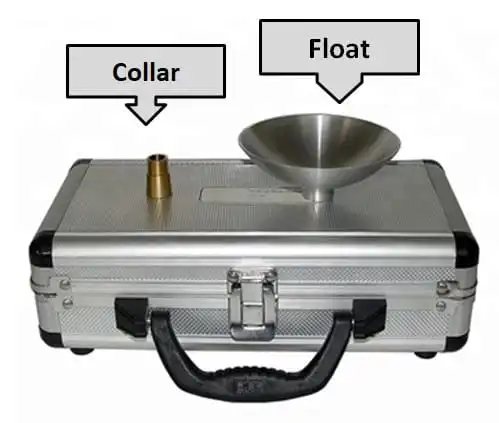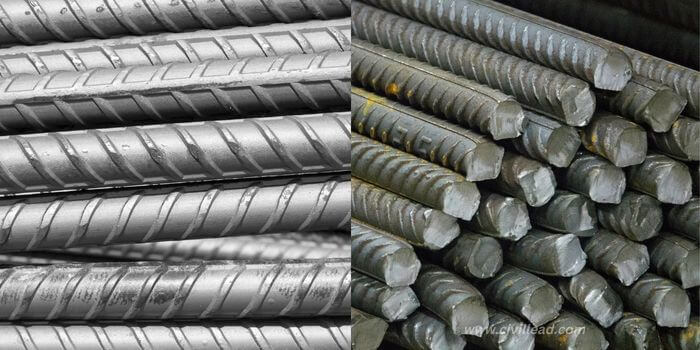Large, dense, naturally occurring boulders are called “building stones” and may be shaped or cut into slabs or blocks for use as walls, roofing, or other construction materials. They have been used as building materials since the dawn of human civilization. Whether sedimentary, metamorphic, or volcanic, building stones are chosen for their intended use, strength, aesthetic appeal, cost, and other characteristics. Below, we discuss granite, basalt, slate, gneiss, and other common building stones.
Common Stones Used in Construction
1. Granite
- There are classifications for igneous and siliceous types.
- The composition is quartz, feldspar, and mica (working with extremely refractory granite becomes easier as the percentage of feldspar decreases and quartz increases).
- Qualities:
- Less than 1% absorption and 2.64 specific gravity
- Crushing strength: 110–140 MN/m2.
- Depending on the feldspar, the color might be pink, gray, brown, or green.
Uses:
- ornamental plinths and columns; creating bridge piers and sea barriers; using large pieces as construction blocks; using smaller pieces as road metal or train ballast;
- Chips are used to make concrete and fake stones.
- may be used as a damp-proof course and as external wall cladding.
2. Basalt or trap
- There are classifications for igneous and siliceous types.
- Ingredients: alumina, silica, and feldspar
- Qualities: strength of crushing in the range of 70–80 MN/m2.
- The specific gravity is 2.96.
- Gray to black in hue, basalt is abrasive and light in tone.
- It provides excellent sound absorption, reserve heat capacity, and heat insulation.
- It is an environmentally friendly building material. Alkalis and acids may both be tolerated by basalt.
Uses:
Suitable for use as paving sets and road metal in the manufacturing of artificial stones used as the aggregate in concrete
3. Slate
- Classification: Shale-derived argillaceous metamorphic rock
- Composition: Sand mixed with alumina or lime carbonate
- Features: The specific gravity is 2.8.
- It’s separated into tiny layers.
- Crushing strength: 60–70 MN/m2
- It’s not absorbing.
- Because they are robust under transverse tension and water resistant, slate sheets make excellent roofing materials.
Uses:
- for the purpose of building electrical switch boards
- Perfect for cisterns, urinal partitions, and other uses.
- might be put into walls to provide a rudimentary barrier that blocks moisture.
4. Gneiss
- Classification: Stratified or bastard granite, metamorphic rock with a somewhat laminated structure. Like granite, feldspar makes up the majority of syenite’s composition instead of quartz.
- Constituents: quartz and feldspar
- Features: Easily separated into slabs and simpler to work with than granite.
Uses:
- For laying down pavement
5. Stone
- Classification: Siliceous sedimentary rock type
- Lime, mica, magnesium, aluminum, oxide, iron, and/or quartz and/or feldspar combined and cemented by any of these elements make up its composition. Other fragments of limestone, mica, or feldspar sometimes may be present.
- Features: The specific gravity is 2.25.
- Crushing strength: 35–40 MN/m2
- Flagstone is sandstone with thin-bedded areas.
- Grit is a kind of rock composed of angular, sharp-pointed sand grains.
- Sandstone that is easily broken into building blocks with a hammer and mallet is referred to as free stone.
- The kind of cement used has an impact on the durability of sandstone. Sandstone will have poor quality if it is porous or contains clay or lime.
- Sandstones usually wear down easily.
- They hold a large quantity of water and allow percolation to pass through them.
Uses:
Fine-grained materials are utilized for ashlar work, mouldings, and carvings.
Rough and coarse-grained materials are employed in rubble work for slabs and tiles.
6. Stone
- Rocks with calcareous sediments are categorized.
- Composition: Although CaCO3 is available in its pure state, it is often mixed with MgCO3, alumina, and a small amount of silica. Whereas magnesian limestones have at least 10% magnesia, dolomites contain more than 45% of the element.
- Features: Specific gravity is 2.6; crushing strength is 52 MN/m2.
Uses:
Quarry waste is used as road metal in blast furnaces, in the tanning and bleaching of stone to make stone masonry for walls, and in the production of cement and lime by paving floors.
7. Granite
- Classification: Rock that has changed from limestone or dolomite to calcareous metamorphic rock.
- Composition: CaCO3 is the main ingredient.
- Features: specific gravity of 2.72
- Crushing strength: 50–60 MN/m2
Uses:
for the sculptural and decorative work on the walls, staircases, electrical switch boards, table slabs, and columns.
8. Quartz crystal
- Sorting: Sandstone-like metamorphic rock with a siliceous texture.
- The composition is silica.
- Features: Dense, stiff, and glassy structure.
- very resistant to degradation by chemicals.
- Orthoquartzite, a very pure quartz sandstone, is often 99% SiO2.
Uses:
as road metal or railroad ballast placed in concrete for large-scale construction projects such as bridge piers, retaining walls, and dams.
9. Kankar
It is an impure limestone that has a porous structure, has 30% clay and sand, and has a gray or khaki appearance.
Uses:
in order to prepare hydraulic lime for use in building foundations as road metal.
10. The latex
- sedimentary rock that is high in grit and has a specific gravity of 2.2
- This material has a low compressive strength, between 2 and 4 MPa.
- It’s a sand-textured claystone with a high iron oxide component.
- The word Kankar refers to a lime-containing calcareous laterite.
Uses:
- like building or pavement stones.
11. Moorum
- What you have here is decomposed laterite.
Uses:
- It is perfect for paving garden walks and attractive trails because of its rich crimson hue. For metal rods, it also functions well as a fine blindage.
12. Gravel
- It’s a mixture of sand and various sized, spherical, water-worn stone pebbles.
Use:
It’s white, pristine limestone. It is used in the creation of Portland cement as well as coloring and marking agents.It is not appropriate for use in building.
13. Shingles
- Broken shingles may be used as road metal, ballast for trains, or as input for concrete.
Characteristics of Good Construction Stones
Some characteristics or features of high-quality building stones are as follows:
- Color and appearance: Avoid iron-rich stones as they may disintegrate due to the deterioration of the ensuing iron oxides.
- The weight of structural stones must be substantial.
Porosity and absorption: It is not advisable to use very porous stones since water may seep into the pores and lead to the stone’s degradation from acids and fumes. Water may freeze in colder areas, shattering the stone. - Grain fineness: Materials with fine grains work well for molding applications.
Compactness: A stone’s durability is based on how compact it is.
Fire resistance: Stone must be homogeneous in composition and devoid of calcium carbonate or iron oxide. - Electrical resistance: Something loses electrical resistance as it becomes wet. A stone has to be non-absorbent (like slate) in order to have a constant and high electrical resistance.
- Hardness and toughness: Building requires stones that are both hard and tough. You may test its hardness by scraping it with a pen knife, and its toughness by pounding it.
- Strength: A high compressive strength is ideal for construction stone.
- Durability: Stones with consistent sizes and little water absorption are hardy.
- Seasoning: After dressing and quarrying, the stones need to be left for six to twelve months.








Hey people!!!!!
Good mood and good luck to everyone!!!!!
Hey I am so delighted I found your weblog, I really found you by accident, while I was searching on Bing for something else, Anyhow I am here now and would just like to say cheers for a marvelous post and a all round enjoyable blog (I also love the theme/design), I don’t have time to look over it all at the minute but I have book-marked it and also included your RSS feeds, so when I have time I will be back to read much more, Please do keep up the great b.